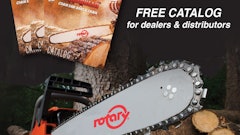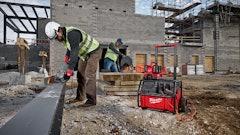
#1. Recognize that this is their baby
“We have our company-wide orientation training right before spring,” says Randy Sharpe, maintenance manager at Reinhart Grounds Maintenance in Bloomington, IL. “We tell our maintenance crew leaders that they are our first line of defense. They are the ones who are on site each and every week.”
Great crew leaders are eager to accept this responsibility—and they own it.
That is definitely the case at The Yard Barbours in Elizabethtown, IN. Co-owner Matt Barbour says it’s by design. Installation crews are given spreadsheets detailing what is to be done on each project. Crew leaders know how many hours they have to complete a project, but they also know that they are not to leave a property until everything on that spreadsheet is checked off.
“Regardless of whether you’re on a maintenance crew or landscape crew, our policy is that you leave the site looking better than it was when you showed up,” Barbour relates. “Also, if you see any other problems, let the office know. We do not want the customer telling us about a problem they discovered; we should be telling them."
#2. Inspect for perfection
Reinhart maintenance crew leaders are trained to always perform a complete walk-around before leaving a property. They do this while the rest of the crew is loading up the equipment. They’re looking to make sure everything is trimmed up nicely, and that beds and hard surfaces are blown off completely.
There's a fine line when it comes to good trimming. “We train our guys to always trim vertically when they come up to beds, curbs, sidewalks, brick edging or other hard surfaces,” Sharpe points out. “This way you don’t get that 6- to 8-inch burn-up on the turf. You might not notice that right away in the spring, but it takes its toll. Come summer when it’s hot and drying up, it doesn’t look crisp and green anymore.”
When trimming around things like trees, fire hydrants or light polls, Sharpe says his guys are trained to trim at a 45° angle.
The crew leaders are also looking for grass clumping, which can become problematic in the spring when the turf is thicker and wetter. If it’s really bad, they might have the mower operator pass through for a second cutting. Other times, they’ll simply walk through the property with backpack blowers to disperse the clumps.
#3. Inspect for turf damage
Reinhart crew leaders are also trained to look for turf damage. They look for tire ruts, which is then remedied through additional training for that mower operator. They also look for pet spots, signs of grub damage, etc., that may require a lawn care technician to attend to; Reinhart also owns several Weed Man franchises.
#4. Inspect for weed pressure
Reinhart crews are trained to check for weed pressure in turf and beds. If it’s getting pretty heavy, they’ll make a note in their daily log that it’s advisable to get a lawn care crew over to the property as soon as possible. It’s a judgment call the crew leader is empowered to make as to whether a certain property should be moved up on the priority list.
#5. Inspect for moisture deficiency
The drought of 2012 was a great example of how important maintenance crews become when things start drying up. “Even on our irrigated properties, our crew leaders would tell us that a given property should be watering five days a week and not just three like they were,” Sharpe says. “We’d take that information and share it with the client.”
#6. Inspect for damaged sprinkler heads
Also on the topic of irrigation, Barbour says his maintenance crews are always on the lookout for damaged sprinkler heads. If they find one, they document it and let the office know so an irrigation crew can be scheduled to take care of it.
#7. Communicate it up the chain
Reinhart Grounds Maintenance has started testing the use of mobile devices by some of its crew leaders. The web-based business management software they use, called Boss LM, is accessed by these mobile devices. Thus, crews can refer to and enter new notes directly into this software while still on the property.
Some crews continue to utilize printed checklists/note sheets, which also prove very reliable. Additionally, “Nothing is beyond a text message in this day and age,” Sharpe points out. For example: Hey, we’re over on property X and see that the weeds are starting to pop a lot earlier than normal. Might need to get a lawn care crew over here soon to put down some post-emergent.”




























